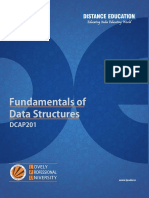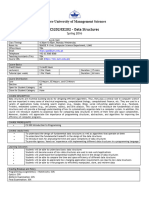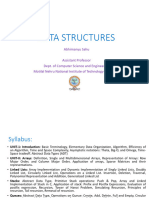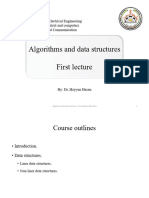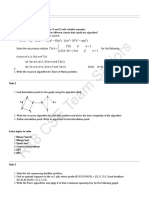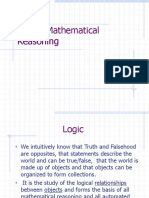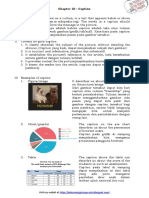0% found this document useful (0 votes)
108 views13 pagesData Structures (CS3301)
This document provides an overview of data structures, defining them as ways to organize and store data efficiently, and categorizing them into linear and non-linear types. It discusses the importance of data structures in efficient data management, resource utilization, and problem-solving, along with various applications in fields like databases and AI. Additionally, it covers specific data structures such as arrays, linked lists, stacks, queues, trees, graphs, and hashing, along with their operations, advantages, and applications.
Uploaded by
IndumathyCopyright
© © All Rights Reserved
We take content rights seriously. If you suspect this is your content, claim it here.
Available Formats
Download as PPTX, PDF, TXT or read online on Scribd
0% found this document useful (0 votes)
108 views13 pagesData Structures (CS3301)
This document provides an overview of data structures, defining them as ways to organize and store data efficiently, and categorizing them into linear and non-linear types. It discusses the importance of data structures in efficient data management, resource utilization, and problem-solving, along with various applications in fields like databases and AI. Additionally, it covers specific data structures such as arrays, linked lists, stacks, queues, trees, graphs, and hashing, along with their operations, advantages, and applications.
Uploaded by
IndumathyCopyright
© © All Rights Reserved
We take content rights seriously. If you suspect this is your content, claim it here.
Available Formats
Download as PPTX, PDF, TXT or read online on Scribd
/ 13






